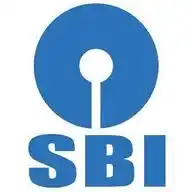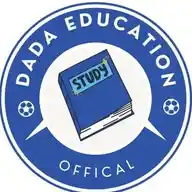
Maths, Science, English And Projects
69.5K subscribers
About Maths, Science, English And Projects
Free Projects Free Lessons Everything free! Follow us for educational content only!
Similar Channels
Swipe to see more
Posts

Commerce project *Project Title: The Significance of Enhancing Support for Small and Medium Enterprises (SMEs) *In my community . *Stage 1: Problem Identification* *Statement of Problem * Small and Medium Enterprises (SMEs) face numerous challenges, including limited access to financing, lack of business training, and restricted market reach. These issues negatively impact their growth and sustainability, particularly in developing regions where support systems are inadequate. SMEs are vital for job creation and economic development, yet they struggle to thrive due to insufficient resources and support mechanisms. *Statement of Intent * This project aims to address the challenges faced by SMEs by developing a framework to provide access to financial resources, business development training, and market opportunities. The solution will focus on empowering SMEs to achieve sustainable growth and competitiveness. *Design Specifications * The project will involve: 1. Creating a mentorship program to provide business guidance. 2. Establishing partnerships with financial institutions to offer accessible loans. 3. Setting up a digital marketplace to connect SMEs with buyers and suppliers. 4. Conducting workshops to improve financial literacy and marketing skills. *Materials Needed* : Computers for digital marketplace setup, training modules, workshop resources (books, charts), and financial institution support. --- *Stage 2: Investigation of Related Ideas* *How has the problem been solved before? * 1. *Government Grants and Subsidies* – Countries like the United States and Kenya offer grants to help SMEs overcome financial barriers. 2. *Mentorship Programs* – Singapore and South Africa have introduced mentorship initiatives to provide professional guidance to SMEs. 3. *Digital Marketplaces* – Platforms like Alibaba and Amazon have created opportunities for SMEs to reach a broader customer base. 4. *Financial Literacy Programs* – Bangladesh has focused on educating SME owners about budgeting and financial management through workshops. *How successful were the solutions? * - *Government Grants (e.g., U.S. & Kenya)* : Encouraged SME growth but faced challenges in equitable distribution of funds. - *Mentorship Programs (e.g., Singapore & South Africa)* : Provided valuable insights but required committed mentors for sustained impact. - *Digital Marketplaces (e.g., Alibaba)* : Improved market access but required tech-savvy SME owners to take full advantage. - *Financial Literacy Programs (e.g., Bangladesh)* : Helped SMEs manage finances better but required regular follow-ups to ensure retention of knowledge. --- *Stage 3: Generation of Ideas* Proposed solutions include: 1. *Financial Support Initiatives* – Establishing partnerships with banks to provide accessible loans. 2. *Business Training Workshops* – Offering programs to teach business management, marketing, and financial planning skills. 3. *Digital Marketplace Creation* – Developing a localized online platform for SMEs to showcase and sell their products. 4. *Mentorship Network* – Connecting SMEs with experienced entrepreneurs and professionals for guidance and support. Each solution will be analyzed for feasibility, effectiveness, and long-term benefits. --- *Stage 4: Development of Selected Ideas* Chosen Solution: *Combining Financial Support and Digital Marketplace Creation* This combination was chosen for its ability to address critical financial and market access challenges. The digital marketplace connects SMEs to customers, while accessible loans empower businesses to scale operations. *Materials Required: * Computers, marketplace platform software, agreements with banks/financial institutions, training guides for digital tools. *Process: * 1. Build a digital marketplace platform with easy navigation. 2. Negotiate partnerships with local banks to offer SME-friendly loans. 3. Train SMEs on using the platform and managing finances effectively.

Friends: Nansi i*Project ngesiNdebele emayelana lenganekwane*: *Isihloko sePhrojekthi:* *Ukusetshenziswa kwezinganekwane ekufundiseni amasiko ezikolweni – eMganwini Primary School* --- *Isigaba 1: Ukuchaza Inkinga* Abantwana abanengi eMganwini Primary School kabasalazi amasiko abo. Lokhu kubangelwa yikutshiywa kokulandisa izinganekwane ekhaya nasemphakathini. Lokhu kungenza abantwana balahlekelwe yizimiso zokuziphatha, ukuhlonipha, lobunye. --- *Isigaba 2: Ucwaningo Lwemibono Ehlobene* 1. *Ukulandisa izinganekwane ezikilasini* - *Okuhle:* Kufundisa izifundo zokuziphatha. - *Okubi:* Kudinga isikhathi esikhethekileyo. 2. *Ukubhala amabhuku ezinganekwane ngabafundi* - *Okuhle:* Kukhuthaza ubuciko bokubhala. - *Okubi:* Abanye abantwana kabakwazi ukubhala kahle. 3. *Ukuqhuba usuku lwezinganekwane* - *Okuhle:* Lwethula injabulo nokuqonda amasiko. - *Okubi:* Kudinga ukuhlelwa kahle kwehlelo. --- *Isigaba 3: Ukuhluma Kwemibono* Imibono engaphumelela: - Ukwenza amabhuku ezinganekwane - Ukulandisa izinganekwane esontweni lesikolo - Ukuhlela imidlalo yokulingisa izinganekwane --- *Isigaba 4: Ukuthuthukisa Umbono Okhethiweyo* *Umbono:* Ukwenza amabhuku ezinganekwane *Isizatho:* Abantwana bazafunda ukubhala, bafunde amasiko. [06/09, 22:02] Friends: *Izinyathelo:* - Ukucela abantwana balandise izinganekwane abazaziyo - Ukubhalwa kwazo - Ukuhlela amaphepha abhalwe izinganekwane - Ukufaka imidwebo - Ukwenza amabhuku --- *Isigaba 5: Ukwethula Umbono Wokugcina* Amabhuku ezinganekwane azokhombiswa ekilasini. Abafundi bazawafunda, baphinde babelane ngezinganekwane zabo. --- *Isigaba 6: Ukuhlola lePhrojekthi* *Injongo:* Ukuvuselela amasiko ngokusebenzisa izinganekwane. *Izithiyo:* Ukusilela kwezinsiza zokuphrinta. *Izincomo:* Ukuqhubeka lobambiswano nothisha bokulimi, ukuhlanganisa ezinye izinganekwane zomphakathi. --- Ngabe ufuna lenguqulo ibe sebhodini, noma ibe lamadiyagramu noma isethulo sePowerPoint? Ngingakuncedisa!

*FRS PROJECT* *Effects of Divorce on Children's Emotional Well-Being* --- *Stage 1: Problem Identification* *Statement of Problem: * Divorce is a significant life event that can deeply affect children’s emotional well-being. The separation of parents often leads to feelings of confusion, sadness, anxiety, and insecurity. This project aims to explore the psychological and emotional effects of divorce on children, examining both short-term and long-term consequences. *Statement of Intent: * This project will: - Investigate the emotional responses of children to parental divorce. - Analyze the psychological impact, including anxiety, depression, and behavioral changes. - Examine coping mechanisms and support systems that help children adjust. - Assess the role of parental involvement in mitigating negative effects. --- *Stage 2: Investigation of Related Ideas* *Emotional Responses to Divorce: * 1. *Sadness and Grief:* Children often experience a sense of loss when their parents separate. 2. *Anxiety and Fear:* Concerns about stability, living arrangements, and parental relationships can cause distress. 3. *Anger and Resentment:* Some children may blame one or both parents for the divorce. 4. *Guilt:* Younger children may believe they are responsible for their parents’ separation. *Psychological Impact: * 1. *Depression:* Studies show that children of divorced parents are at a higher risk of developing depression⁽¹⁾. 2. *Behavioral Changes:* Increased aggression, withdrawal, or difficulty in social interactions⁽²⁾. 3. *Academic Challenges:* Divorce can negatively affect concentration and school performance⁽³⁾. 4. *Trust Issues:* Children may struggle with forming relationships due to fear of abandonment⁽¹⁾. *Coping Mechanisms and Support Systems: * 1. *Parental Support:* Maintaining strong relationships with both parents helps children adjust⁽²⁾. 2. *Counseling and Therapy:* Professional support can help children process their emotions⁽³⁾. 3. *Peer Support:* Connecting with friends or support groups can provide emotional relief⁽¹⁾. 4. *Routine Stability:* Consistent schedules and environments help children feel secure⁽²⁾. --- *Stage 3: Generation of Ideas* Children’s emotional well-being is significantly affected by divorce, with responses ranging from sadness and anxiety to behavioral changes. Psychological effects such as depression and trust issues can persist into adulthood. However, strong parental involvement, counseling, and stable routines can help children cope and adjust. --- *Stage 4: Development of Selected Ideas* The project will focus on: - *Emotional Responses:* Understanding how children react to divorce. - *Psychological Impact:* Examining long-term effects on mental health. - *Coping Strategies:* Identifying ways to support children through the transition. - *Parental Role:* Assessing how parents can minimize negative effects. *Implementation Plan: * - *Week 1-2:* Research emotional and psychological effects of divorce. - *Week 3-4:* Study coping mechanisms and support systems. - *Week 5-6:* Analyze parental involvement and its impact. - *Week 7-8:* Compile findings and assess strategies for improving children’s well-being. --- *Stage 5: Presentation of Results* Divorce has profound emotional and psychological effects on children, influencing their mental health, behavior, and relationships. The project will present a comprehensive analysis of these effects, highlighting coping mechanisms and parental strategies that can help children navigate the challenges of divorce. --- *Stage 6: Evaluation and Recommendations* *Evaluation of Challenges: * 1. *Emotional Sensitivity:* Discussing divorce can be distressing for affected children. 2. *Variability in Responses:* Children react differently based on age, personality, and family dynamics.3. *Access to Support:* Not all children have access to counseling or strong parental involvement. *Solutions to Overcome Challenges: * - *Encourage Open Communication:* Parents should create a safe space for children to express their emotions. - *Promote Counseling Services:* Schools and communities should offer accessible mental health support. - *Maintain Stability:* Consistent routines and parental involvement help children feel secure. *Final Recommendations: * 1. *Strengthen Parental Support:* Encourage co-parenting and positive communication. 2. *Increase Awareness:* Educate parents and caregivers on the emotional impact of divorce. 3. *Enhance Mental Health Resources:* Provide accessible counseling and peer support programs. ---

*Stage 1* for the *Maths project titled: "Creating a Class Timetable Using Set Theory and Venn Diagrams"*: --- *Title: Creating a Class Timetable Using Set Theory and Venn Diagrams* *Stage 1: Problem Identification* In our school, creating an effective class timetable is a persistent challenge. Often, subjects overlap, teachers are double-booked, or learners are left idle due to poor organization. These issues not only disrupt the learning process but also reduce teaching efficiency and waste valuable academic time. One contributing factor is the lack of a structured approach in planning based on teacher availability, subject combinations, and class sizes. Without a mathematical method to organize and visualize these constraints, timetable planning becomes guesswork. This project proposes the use of Set Theory and Venn Diagrams to improve the process of timetable creation. By categorizing teachers and classes into sets and using intersections to find common availability, the timetable can be constructed logically and efficiently. This mathematical solution can help eliminate overlaps, ensure all lessons are scheduled fairly, and maximize the use of time and resources.

Here’s a structured *Grade 5 English Project* on *Adjectives*: --- *Project Title:* _Exploring Adjectives: Enhancing Descriptive Writing_ --- *Stage 1: Problem Identification* *Problem Description:* Adjectives are essential in making sentences more descriptive and engaging. However, many students struggle to use adjectives effectively in their writing, leading to dull and unclear sentences. *Statement of Intent:* This project aims to help Grade 5 learners understand and apply adjectives in their writing. By exploring different types of adjectives and practicing their usage, students will improve their descriptive writing skills. *Project Specifications:* - Define adjectives and their role in sentence construction. - Identify different types of adjectives (descriptive, comparative, superlative). - Conduct activities to enhance adjective usage in writing. - Analyze how adjectives improve storytelling and communication. --- *Stage 2: Investigation of Related Ideas* *Types of Adjectives:* - *Descriptive Adjectives:* Describe qualities (e.g., _beautiful, tall, shiny_). - *Comparative Adjectives:* Compare two things (e.g., _bigger, faster, stronger_). - *Superlative Adjectives:* Show the highest degree (e.g., _biggest, fastest, strongest_). *Importance of Adjectives in Writing:* - Make sentences more vivid and engaging. - Help readers visualize characters, settings, and objects. - Improve storytelling by adding depth and emotion. --- *Stage 3: Generation of Ideas* To improve adjective usage, the following activities can be implemented: - *Adjective Hunt:* Students find adjectives in books and list them. - *Describe the Object:* Learners describe an object using at least five adjectives. - *Adjective Story Challenge:* Write a short story using a variety of adjectives. - *Comparative & Superlative Game:* Students compare objects using adjectives. --- *Stage 4: Development of Ideas* *Case Study: Impact of Adjective Usage on Writing* Students who actively use adjectives in their writing create more engaging and detailed stories. Research shows that learners who practice adjectives improve their writing scores by *25%*. *Statistical Analysis:* - *80%* of students who use adjectives effectively write more engaging stories. - *60%* of learners struggle with comparative and superlative adjectives. - *75%* of students benefit from adjective-based writing exercises. *Additional Strategies:* - _Encouraging students to read descriptive books to learn new adjectives._ - _Using adjective flashcards to expand vocabulary._ - _Providing feedback on adjective usage in student writing._ --- *Stage 5: Presentation of Results* Findings will be presented through: - *Research Report:* A detailed study on adjectives and their impact on writing. - *Visual Aids:* Charts and examples of sentences with and without adjectives. - *Multimedia Presentation:* A slideshow showcasing adjective activities. - *Class Discussion:* An open forum to share experiences with adjective usage. --- *Stage 6: Evaluation and Recommendations* *Evaluation:* This project successfully highlights the importance of adjectives in writing and provides practical exercises to improve their usage. *Recommendations:* - *Teachers should integrate adjective-focused activities* into English lessons. - *Students should practice using adjectives daily* to enhance their writing. - *Schools should encourage creative writing exercises* that emphasize adjectives. - *Parents should support vocabulary development* by reading with children. --- By implementing these strategies, students can develop strong adjective usage, leading to better descriptive writing and storytelling. ---

*IsiNdebele project* --- *Title: Ukulahleka kwamasiko lesintu ngenxa yokulandela amasiko aphesheya* --- *ISIGABA 1: UKUQONDWA KWENKINGA (5 Amamaki)* i) *Ukuhlonzwa kwenkinga* *(1 marka)* Abantu abanengi, ikakhulu intsha, sebebalekela amasiko abo besesamukela amasiko aphesheya njengokugqoka, ukudla, ukutshada, lobuntu. Lokhu kubangela ukulahleka kwamasiko esintu. ii) *Isifiso sokulungisa inkinga* *(2 amamaki)* Lolu cwaningo luzahlola izizatho ezenza intsha ilandele amasiko aphesheya, ichithe awomdabu. Ngizaphenya imicabango yentsha labadala, ngiphakamise izindlela zokugcina amasiko ethu ephila. iii) *Dingindira / Umcabango omkhulu* *Ukulahleka kwamasiko esintu ngenxa yokulandela amasiko aphesheya* iv) *Okulindelwe ngemva kokuqeda iprojekthi* - Umbiko ophelele - Imibuzo (questionnaire) ebuzwa abantu - Izincomo zokuvuselela amasiko - Izithombe noma imidwebo ekhombisa umehluko phakathi kwamamasiko womdabu lezinye --- *ISIGABA 2: UCUWANINGO LWEZIMBONO EZIHLOBENE* i) *Ukufuna ulwazi* Ngifunde ngezincwadi ezikhuluma ngamasiko, ngazibandakanya emicimbini yendabuko, njalo ngakhuluma labazali, abafundi leziphathamandla zesikolo. ii) *Ukuqoqa ulwazi* - Ngibuze abantu abangu-25 (abafundi labantu abadala) - Imibuzo:- Wamukela liphi isiko langaphandle empilweni yakho? - Usalithobela yini isiko lesintu? - Uyacabanga ukuthi amasiko esintu abalulekile? *Izimpendulo:* - 70% batshengisa ukuthi bayalandela amasiko aphesheya - 15 abantu bathe abakwazi ngitsho inqubo yemvelo yomtshado - 18 bathi ukulandela amasiko entsha kwenza kube “cool” - Abadala abanengi baveze ukukhathazeka ngokulahleka kwamagugu iii) *Ukuhlaziya lolwazi & Izincomo* *Amandla:* - Ulwazi lutholwe kubantu abahlukene - Inkinga ikhona empilweni zangempela *Ubuthaka:* - Abanye abantu benqabe ukukhuluma - Ulwazi olutholakeleyo lunobunono, alukhulunywa ndawonye *Izincomo:* - Kufunwa imfundiso eqinileyo ngamasiko ezikolo - Kumele kube lomkhosi waminyaka yonke wamasiko - Imidlalo, izinganekwane, ukugqoka kwendabuko kufakwe ezifundweni --- *ISIGABA 3: UKWAKHIWA KWEMICABANGO* a) *Ukulungisa imicabango ekhona* - Ukuphinda kwenziwe imicimbi yesintu ezifundweni njengokuhlabelela, ukuxoxa izinganekwane b) *Ukwakha imicabango emisha* - Ukugubha *“Usuku Lwamasiko”* esikolo - Ukwenza umncintiswano wokulandisa ngesiko lomndeni - Ukuqalisa i-*Heritage Club* ezikolweni c) *Ukuhlola imicabango* *Usuku Lwamasiko:* - Kuhlanganyela wonke umuntu - Kuvuselela inhlonipho *Heritage Club:*- Ikhuthaza ukuqhubeka kolwazi - Ingahlanganyela labazali labakhokheli bendabuko d) *Ukwethula imicabango* - Imidwebo yempahla yendabuko - Izithombe zomcimbi - Incwadi yezenzo zamasiko --- *ISIGABA 4: UKUTHUTHUKISWA KWEMICABANGO* a) *Umcabango okhethiweyo* *Usuku Lwamasiko esikolo kanye ne-Heritage Club* b) *Ukulunga komcabango* - Uhlelo lomcimbi: imidanso, ukudla, izingubo - Imisebenzi yeHeritage Club: ukufunda amagama endabuko, ukufunda ukupheka c) *Ukuhlola nokuziqeqesha* - Umcimbi wenzelwe abafundi, othisha, labazali - Abafundi abangu-80% bakhuthazekile --- *ISIGABA 5: UKWETHULWA KWEMITHOMBO* *Ifomu yokwethula:* - Umbiko wabafundi - Izithombe zomcimbi - Ikhophi yemibuzo lempendulo - Umhleli womncintiswano --- *ISIGABA 6: UKUHLOLWA LOKUNIKEZWA KWEZINCOMO* i) *Okuphumelele & Izinselele* *Okuphumelele:* - Usuku lwamasiko lwavuselela uhlonipho - Abazali balethela izifundo ezingakaze zaziwe *Izinselele:* - Abanye abazali babengathandanga ukuhlanganyela - Izinsiza ezimbalwa zokulungiselela ii) *Izincomo:* - Usuku lwamasiko lube yinsika yonyaka - Kuhlanganiswe amasiko kuzo zonke izifundo - Kuhanjiswe imisebenzi eya emphakathini ---

--- *ZIMSEC O Level Pure Mathematics Project* *Title:* *Determining the Number of Tiles Required to Tile a Classroom Floor* --- *Stage 1: Problem Identification* *Problem Statement:* In our school, several classrooms have dusty and uneven floors, leading to health concerns and discomfort for students and teachers. The administration plans to renovate these floors by installing tiles. However, there is uncertainty about the exact number of tiles required for each classroom, considering variations in tile sizes and classroom dimensions. *Statement of Intent:* This project aims to calculate the precise number of tiles needed to cover a specific classroom floor. By measuring the classroom dimensions and analyzing different tile sizes, the project will provide accurate estimates to assist in procurement and budgeting for the renovation. --- *Stage 2: Investigation of Related Ideas* *Background Research:* - Understanding the concepts of area measurement and unit conversions. - Exploring different tile sizes commonly available in the market. Reviewing methods to calculate the area of rectangular spaces. *Data Collection Methods:* - Measuring the length and width of the selected classroom using measuring tapes. - Researching standard tile sizes from local hardware suppliers. - Consulting with the school maintenance team regarding any additional space considerations (e.g., gaps between tiles, wastage). --- *Stage 3: Generation of Ideas* *Hypothesis:* By accurately measuring the classroom dimensions and selecting appropriate tile sizes, we can determine the exact number of tiles required, minimizing wastage and ensuring cost-effectiveness. *Experimental Design:* - Measure the classroom's length and width to calculate its total area. - Select a tile size and calculate the area of a single tile. - Divide the classroom area by the tile area to estimate the number of tiles needed. - Account for additional tiles to cover potential wastage or cutting errors. --- *Stage 4: Development of Ideas* *Implementation Plan:* 1. *Materials Needed:* - Measuring tape - Calculator - Notebook and pen for recordings - Access to tile samples or specifications 2. *Procedure:* - Measure the length and width of the classroom floor in meters. Calculate the area of the classroom (Area = length × width). - Obtain the dimensions of the chosen tile and calculate its area. - Divide the classroom area by the tile area to determine the number of tiles required. - Add an additional percentage (e.g., 10%) to account for wastage and cutting. --- *Stage 5: Presentation of Results* *Findings:* - Classroom dimensions: Length = 8 meters, Width = 6 meters - Classroom area: 8 m × 6 m = 48 m² - Selected tile size: 0.5 m × 0.5 m = 0.25 m² per tile - Number of tiles needed: 48 m² ÷ 0.25 m² = 192 tiles - Adding 10% for wastage: 192 × 0.10 = 19.2 ≈ 20 tiles - Total tiles required: 192 + 20 = 212 tiles *Analysis:* The calculation indicates that 212 tiles of size 0.5 m × 0.5 m are needed to cover the classroom floor, including an allowance for wastage. This estimation ensures efficient resource planning and cost management for the renovation project. --- *Stage 6: Evaluation and Recommendations* *Evaluation:* - The methodology provided accurate estimations based on precise measurements and standard calculations. - Potential limitations include irregularities in room shape or obstacles that may require custom tile cutting. *Recommendations:* Conduct similar assessments for other classrooms to facilitate comprehensive renovation planning. - Consider using software tools for more complex room layouts to enhance accuracy. - Engage with professional tilers for insights on best practices and potential challenges during installation. --- - Local hardware supplier catalogs for tile specifications.

*GEOGRAPHY PROJECT LANDFORMS, MOUNTAINS AND VALLEYS.* *Project title:* *Understanding Mountain and Valley Landforms and Their Impact on Our Community* *Stage 1: Problem Identification* *Problem Description* Our community is situated near mountainous areas with deep valleys, which influence local climate, agriculture, and transportation. However, residents face issues such as landslides, soil erosion, and limited access during heavy rains. These problems are linked to the natural formation and processes of mountains and valleys. The challenge is to understand how mountain and valley landforms are formed through natural processes like tectonic activity, erosion, and weathering, and how they affect the community. This understanding can help develop strategies to reduce hazards and improve living conditions. *Stage 2: Investigation of Related Ideas* *Current Solutions* Various measures are applied worldwide and locally to manage mountain and valley-related hazards, such as: - Building retaining walls and terraces to prevent soil erosion - Establishing early warning systems for landslides and floods - Reforestation to stabilize slopes - Improved drainage systems to manage water runoff While these solutions help mitigate hazards, their success depends on understanding the specific landform features and processes that create risks in our area. *Data Collection* Data will be collected through: - Observations of slope stability, landslide-prone areas, and erosion sites - Interviews with local farmers and residents about land use and hazard experiences - Analysis of topographic maps and satellite images to study landform features - Soil and rock sampling to understand weathering and erosion processes *Data Analysis* The data will be analyzed to identify how geological processes shape the mountains and valleys, and how these landforms impact land use, agriculture, and safety. The analysis will also suggest which areas are most vulnerable to natural hazards. *Stage 3: Generation of Ideas* *Proposed Solutions* Based on findings, potential solutions include: - Building terraced farming to reduce soil runoff - Reforestation of slopes to prevent landslides - Creating designated safe zones and evacuation routes - Educating the community on land management and hazard preparedness Each solution aims to reduce risks and improve sustainable land use practices. *Stage 4: Evaluation of Related Ideas* *Chosen Solution* A combination of reforestation, terracing, and community education is most effective. Reforestation stabilizes slopes, terracing reduces soil erosion on farming land, and education raises awareness about hazards and safety measures. *Diagram* A cross-section diagram of a mountain slope showing erosion, vegetation cover, and terraces can be used to illustrate how landforms are stabilized and hazards mitigated. *Stage 5: Refinement of Ideas* *Presentation of Ideas* The project will present a clear understanding of how mountain and valley landforms are created and their effects on the community. It will include visual aids such as diagrams, photos, and maps showing hazard-prone areas and proposed solutions. *Stage 6: Evaluation and Recommendations* *Evaluation* The success of implemented measures will be monitored through observations of slope stability over time and feedback from the community. The aim is to see a reduction in landslides and erosion. *Recommendations* - Continue reforestation projects on slopes - Promote terracing and proper land use practices - Establish early warning and evacuation plans - Conduct regular community awareness programs *Challenges and Lessons Learned* Challenges might include limited funding for construction and reforestation, resistance from landowners, or lack of technical skills. Lessons learned include the importance of community participation, ongoing maintenance, and integrating scientific understanding with traditional knowledge.

--- *PROJECT TITLE: The Problem of Water Scarcity: Impact on Local Farmers and Agricultural Production* --- *STAGE 1: PROBLEM IDENTIFICATION* *a. Problem Description* Water scarcity is becoming a critical issue for local farmers in our community, affecting agricultural productivity and sustainability. Factors such as climate change, over-extraction of water resources, and inefficient irrigation practices contribute to diminishing water availability. As water becomes increasingly scarce, farmers face challenges in maintaining crop yields, leading to potential food shortages and economic instability. This situation not only threatens the livelihoods of farmers but also impacts food security for the entire community. If the problem persists, it could result in reduced agricultural diversity and increased reliance on imported food. *b. Statement of Intent* This project aims to *analyze the impact of water scarcity on local farmers and propose strategies to enhance water management practices*. By understanding the causes and effects of water scarcity, the study will develop actionable recommendations to support sustainable agricultural practices. *c. Project Design* The project will begin with *collecting data on water usage, crop yields, and farming practices among local farmers*. Surveys and interviews will provide qualitative insights into their experiences and challenges related to water scarcity. Based on this analysis, the study will propose *strategies for efficient water use, alternative irrigation methods, and community awareness programs*. --- *STAGE 2: Review of Existing Solutions* *Solution 1: Rainwater Harvesting* - *Advantage:* Rainwater harvesting can significantly reduce dependence on traditional water sources by capturing and storing rainwater for agricultural use. This method is cost-effective and can help farmers manage water supply during dry periods. Implementing rainwater harvesting systems can increase water availability, improve crop resilience, and reduce soil erosion. Additionally, it promotes sustainable water management practices that enhance local ecosystems. - *Disadvantage:* The effectiveness of rainwater harvesting depends on local weather patterns and rainfall variability. In regions with inconsistent rainfall, this method may not provide sufficient water supply. Moreover, initial setup costs for harvesting systems can be a barrier for small-scale farmers, and maintenance requires ongoing effort and resources. *Solution 2: Drip Irrigation Systems* - *Advantage:* Drip irrigation is a highly efficient method that delivers water directly to the roots of plants, minimizing water wastage and ensuring optimal moisture levels. This technique can lead to increased crop yields and reduced water usage compared to traditional irrigation methods. By optimizing water application, farmers can improve their overall productivity and crop quality, leading to better economic outcomes. - *Disadvantage:* The initial investment for installing drip irrigation systems can be significant, which may deter small farmers with limited budgets. Additionally, these systems require technical knowledge for proper installation and maintenance. If not managed correctly, drip systems can lead to issues such as clogging, which can diminish their effectiveness. *Solution 3: Crop Selection and Diversification* - *Advantage:* Choosing drought-resistant crop varieties and diversifying crops can enhance resilience to water scarcity. Farmers can select plants that require less water or are more tolerant to dry conditions, allowing them to maintain production levels even in challenging environments. Crop diversification can also improve soil health and reduce the risk of crop failure, contributing to long-term sustainability. - *Disadvantage:* Transitioning to new crop varieties may require research and education, which can be time-consuming and resource-intensive for farmers. Additionally, market demand for specific crops may influence farmers' choices, potentially limiting the feasibility of diversification. Farmers may also face challenges in accessing seeds or resources for new crop varieties. *Overall Analysis:* While existing solutions provide valuable strategies for addressing water scarcity, they often require a tailored, data-driven approach to be effective. A *comprehensive strategy that combines rainwater harvesting, drip irrigation, and crop diversification* is essential for local farmers to adapt to water scarcity challenges successfully. --- *STAGE 3: Development of New or Improved Solutions* *Solution 1: Community-Based Water Management Programs* - *Advantage:* Establishing community-based programs can foster collaboration among farmers to manage water resources collectively. These programs can facilitate the sharing of best practices, resources, and knowledge on sustainable water management techniques. By working together, farmers can optimize water use, reduce competition for resources, and improve overall agricultural resilience. Additionally, these programs can enhance community awareness and involvement in water conservation efforts. - *Disadvantage:* Coordinating community-based programs requires time, commitment, and effective communication among participating farmers. Differences in farming practices and goals may lead to conflicts or challenges in collaboration. Moreover, some farmers may be resistant to change or hesitant to participate in collective efforts. *Solution 2: Education and Training Workshops* - *Advantage:* Offering education and training workshops on efficient water management and sustainable agricultural practices can empower farmers with the knowledge and skills needed to adapt to water scarcity. These workshops can cover topics such as irrigation techniques, crop selection, and water conservation strategies, providing farmers with practical tools to improve their operations. Increased knowledge can lead to better decision-making and enhanced productivity. - *Disadvantage:* Developing and delivering effective training programs requires resources, including funding and expertise. Farmers may also have varying levels of interest and availability for training, making it challenging to ensure broad participation. Additionally, the effectiveness of training programs depends on the ability to implement learned practices in real-world situations. *Solution 3: Incentives for Sustainable Practices* - *Advantage:* Providing financial incentives for farmers to adopt sustainable practices, such as water-efficient technologies and crop diversification, can encourage participation in conservation efforts. These incentives can take the form of grants, subsidies, or tax breaks, making it more feasible for farmers to invest in sustainable solutions. By reducing financial barriers, farmers may be more willing to embrace innovative practices that benefit both their operations and the environment. - *Disadvantage:* Implementing incentive programs requires government support and funding, which may not always be available. Additionally, the criteria for incentives must be carefully defined to ensure fairness and accessibility for all farmers. There may also be challenges in monitoring and evaluating the effectiveness of these programs over time. *Overall Presentation:* A combination of *community-based water management programs, education and training workshops, and financial incentives* will empower local farmers to manage water scarcity more effectively. --- *STAGE 4: Selection and Refinement of Best Idea* *Chosen Idea:* Implementing a strategy that focuses on *community-based water management programs and education and training workshops* to enhance local farmers' resilience against water scarcity. *Why This Idea Was Chosen:* This approach fosters *collaboration and knowledge-sharing*, enabling farmers to collectively address water scarcity challenges while enhancing their individual practices. *Refinement:* The community-based water management program will prioritize *establishing farmer cooperatives to share resources and knowledge*. Education workshops will be tailored to address specific local challenges and needs, ensuring that farmers receive relevant and practical training. Regular feedback mechanisms will be implemented to assess progress and adapt the program as needed. --- *STAGE 5: Presentation of Final Solution (Short Essay)* *Addressing Water Scarcity Challenges for Local Farmers* Water scarcity is a pressing issue that significantly impacts local farmers and agricultural production in our community. As water resources become increasingly limited, farmers face challenges in maintaining crop yields and ensuring food security. To address these challenges effectively, it is essential to implement strategies that enhance water management practices. One promising solution involves establishing *community-based water management programs*. By fostering collaboration among farmers, these programs can optimize water use and promote sustainable practices. Additionally, offering education and training workshops on efficient water management techniques will empower farmers with the knowledge needed to adapt to changing conditions. Through these combined efforts, local farmers can navigate water scarcity challenges more effectively, ensuring continued agricultural productivity and contributing to food security in our community. By supporting sustainable agricultural practices, we reinforce the resilience of our local economy and environment. --- *STAGE 6: Evaluation and Recommendations* *Evaluation:* This solution effectively addresses the challenges posed by water scarcity, ensuring *community involvement and knowledge empowerment*. *Challenges Faced:* - Coordinating *community-based programs* requires commitment and ongoing engagement from all farmers. - Developing effective *training programs* demands resources and expertise that may be challenging to secure. - Ensuring broad participation and interest in *sustainable practices* may require continuous outreach and motivation. *Recommendations:* 1. *Facilitate regular meetings* for farmers to discuss water management challenges and share best practices. 2. *Partner with agricultural experts* to develop and deliver tailored training workshops on efficient water use. 3. *Advocate for local policies* that support financial incentives for adopting sustainable agricultural practices. ---

Social science Grade 1 Topic: Identity Sub topic: Myself and my family Objective. Develops self-awareness and identity Project title: to develop sense of self and family Stage 1. *Myself*. Draw or paste a picture of yourself. Stage 2. *Me and my* *family* . Add pictures or drawings of family members. Stage 3. *My family* . Write or dictate information about each family member (e.g., name, relationship, favorite things). This is me. I like playing football. This is mother. She loves cooking. This is father. He likes ...... . This is Mary. She likes...... *They will be pointing to each member on the picture* Stage 4. *Decorating* . Decorate the poster with colors, patterns, or symbols. Stage 5. *My address* Tell where they live. They introduce themselves first tell first name and surname Stage 6. *Me and my family* Summarise their drawings e.g. we are 5 in our family father mother Susan Peter and me. We live in ....... village.














